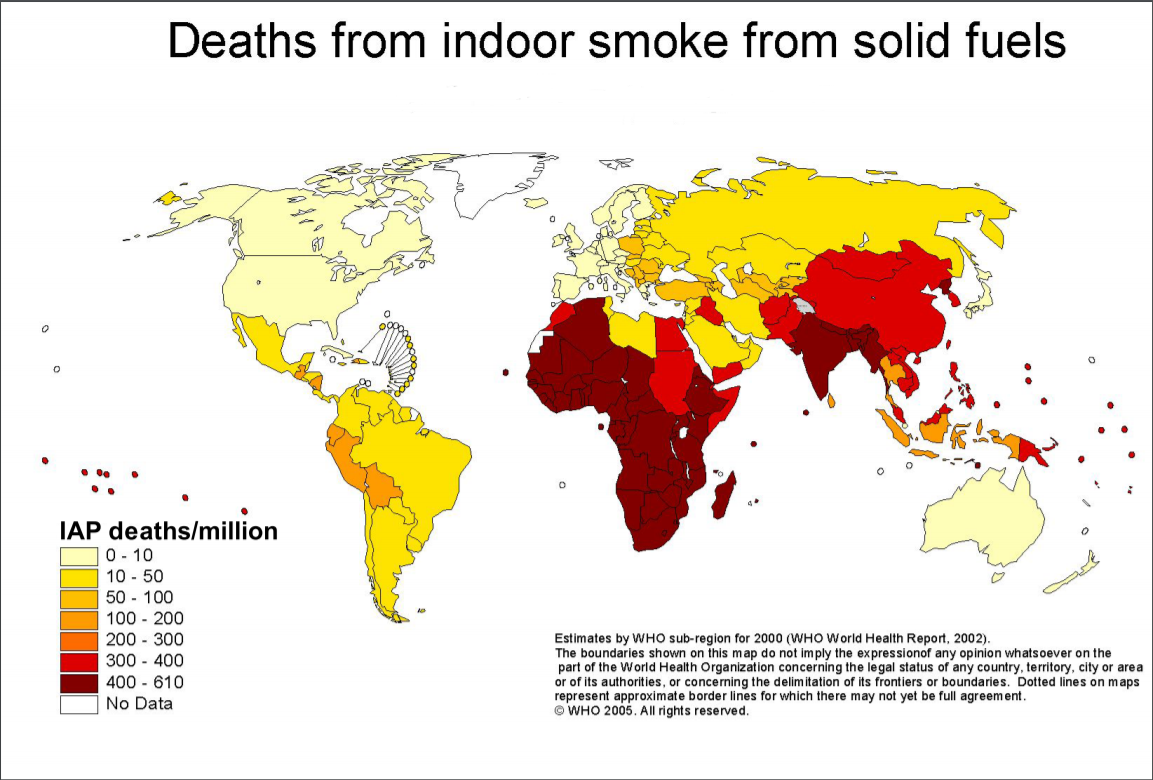The problem
For nearly 3 billion people of the world's poorest, the simple act of cooking a meal is an uncomfortable and deadly daily experience that accounts for approximately 5% of the global burden of disease and close to 4 million deaths globally each year, which is greater than the mortality rate due to HIV/AIDS(1.6 million) and malaria(627,000) combined.
Of these deaths:
- 27%-Pneumonia
- 27%-Ischemic heart disease
- 20%-Chronic obstructive pulmonary disease (COPD)
- 18%-Stroke
- 8%-Lung cancer.

But why is cooking so dangerous? Simply put-Unclean fuels. These fuels include wood, crop wastes, charcoal, coal, unpressurised kerosene among others. Charcoal in Africa -for example- is a $24.5 billion market that causes 2 million hectares of deforestation annually – more than 200 times the size of Manhattan – and also causes deaths from household air pollution.
While bold steps have been made so far in having some populations in Asia, Africa and Latin America move from unclean fuels to relatively cleaner fuels, progress is relatively slow due to a knowledge and technology gap in developing countries on how to generate data quickly on the causes of household air pollution within their own contexts( Is it human behaviour/stove technologies used/ Types of fuels used or a complex combination of the three that is the cause ) and at minimal cost in order to create effective counter-measures. We believe that open source DIY is the way by which this gap will be filled.
About OpenHAP

OpenHAP is an open source device used to monitor exposure to pollutants within the indoor household space. It is also very useful for non invasive monitoring of human habit and actions that may have contributions to pollution, without the need to ask direct questions that may offend or go against culture thus difficult to obtain answers to.
Documentation log (In order)
- My personal experience with household air pollution
- Prototype schematic entry
- Prototype PCB layout
- 3D printing the prototype enclosure
- Prototype assembly
- Testing the thermal image sensor
- Choosing the embedded web server stack
- Configuring the handheld wrist beacon for activity sensing.
- Measuring power consumption of a single data acquisition cycle
- Real world test - Rural Kenya - Copy of first log
- Real world test - Urban low income - A family of four - Must read
OpenHAP block diagram

OpenHAP design goals
The design goals for the OpenHAP project include:
- Open design from hardware to firmware level.
- Ease of production and assembly by leveraging easily accessible rapid manufacturing services such as 3D printing and laser cutting which are widely available in most capital cities.
- Ability to monitor particulate Matter mass per volume of air (PM 2.5 and/or PM 10).
- Ability to monitor ambient humidity and temperature.
- Ability to monitor and infer human activity patterns and habit changes within households.
- Ability to infer stove use by temperature monitoring without affecting the household habits(Non invasive).
 aloismbutura
aloismbutura